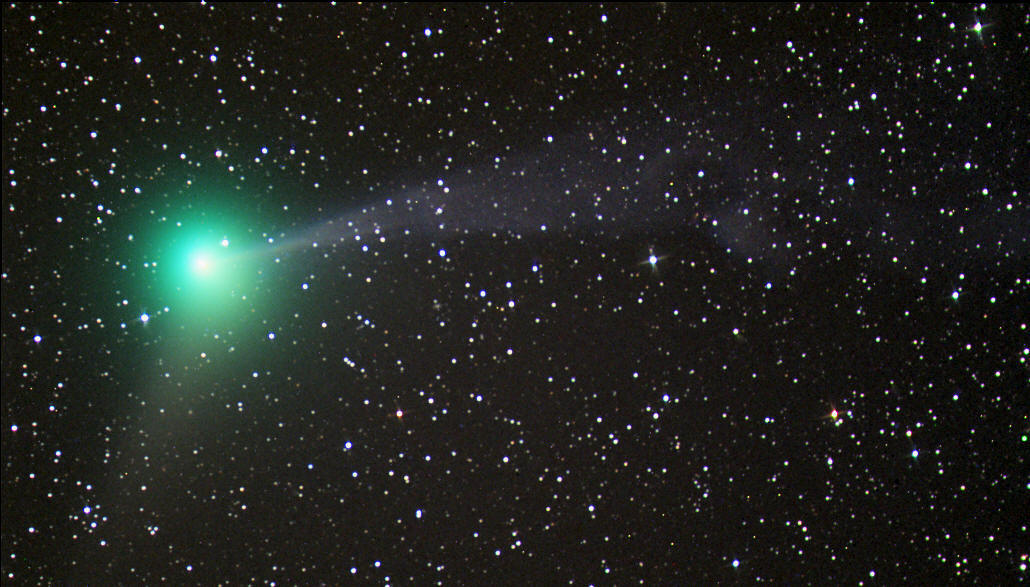
Comet Machholz C2004/Q2 December 12, 2004 Kitt Peak National Observatory
Data Acquisition: Fred Calvert / Adam Block / NOAO / AURA / KPNO / NSF
Image Processing: Fred Calvert / Coldspring Observatory

Comets are made of rocky material and icy mixtures of water and various other chemicals. As a comet approaches the Sun, the surface is heated and essentially boils off. Scientists call the process sublimation. The gas and dust creates a head, also called a coma, and sometimes a tail. Sunlight reflects off the material, making some comets visible from Earth.
The dust tail is composed of small (smoke-sized) dust particles driven off the nucleus by escaping gases; this is the part of a comet that is easiest to see, and is not as long as the ion tail.
The Ion tail is composed of plasma (ionized gases) and created by interaction with the solar wind The ion tail can be as much as 1-2 AU (150 - 300 million km long) when a comet is near the Sun!
Equipment:
Televue (480mm f6.3) SBIG ST10XME w Color Filter Wheel Piggybacked to a Mead 16" LX200
LRGB Exposure Data:
Luminance = 45 minutes (synthetic) binned 1 X 1 / Red = 45 minutes binned 1 X 1 / Green = 45 minutes binned 1 X 1 / Blue = 45 minutes binned 1 X 1